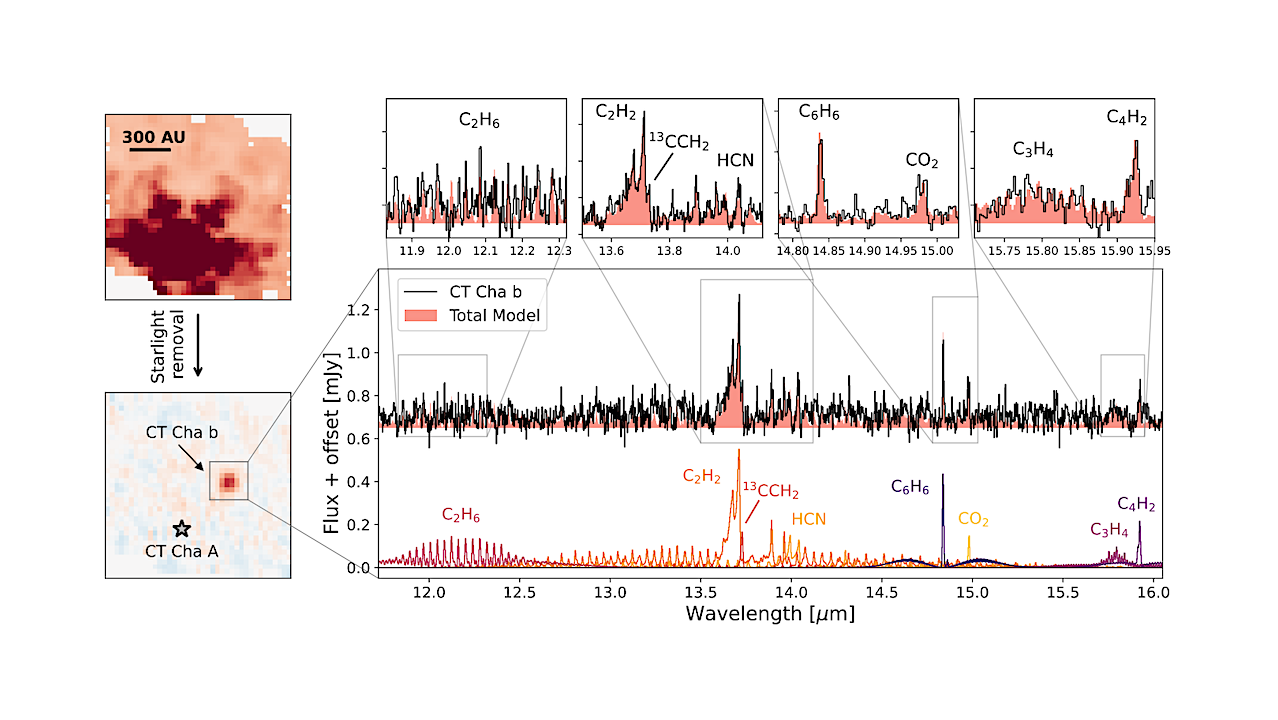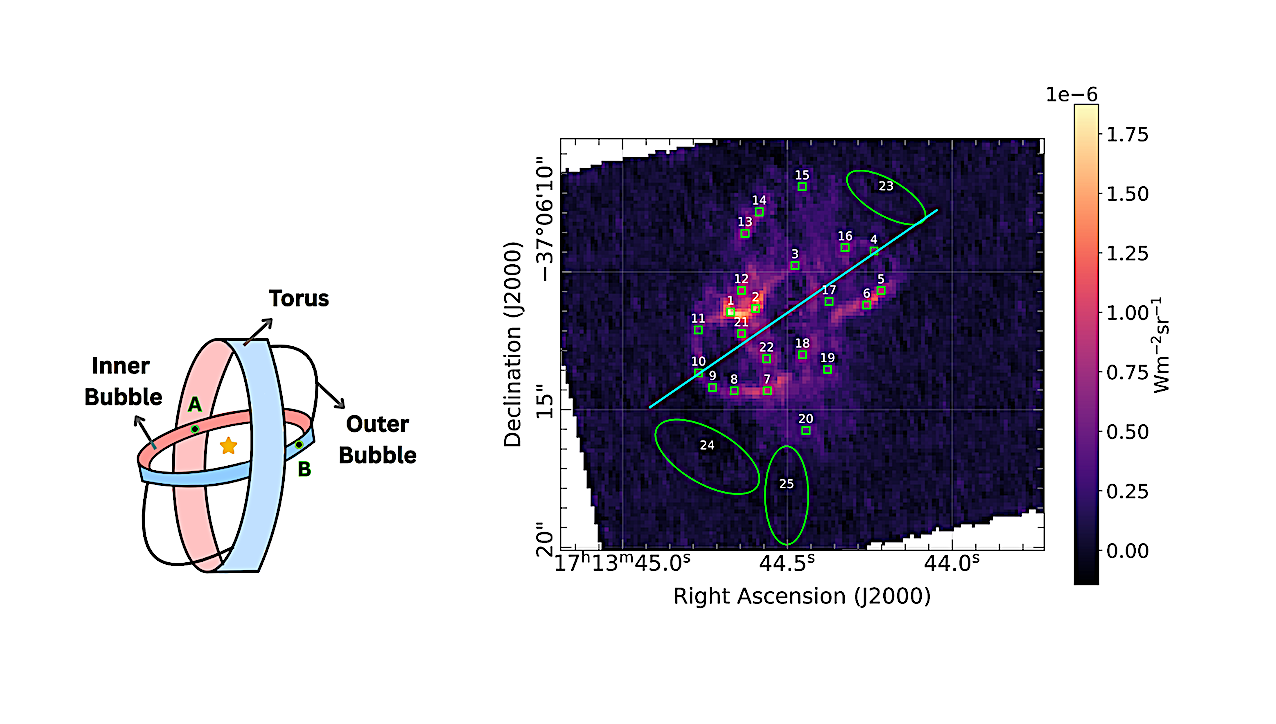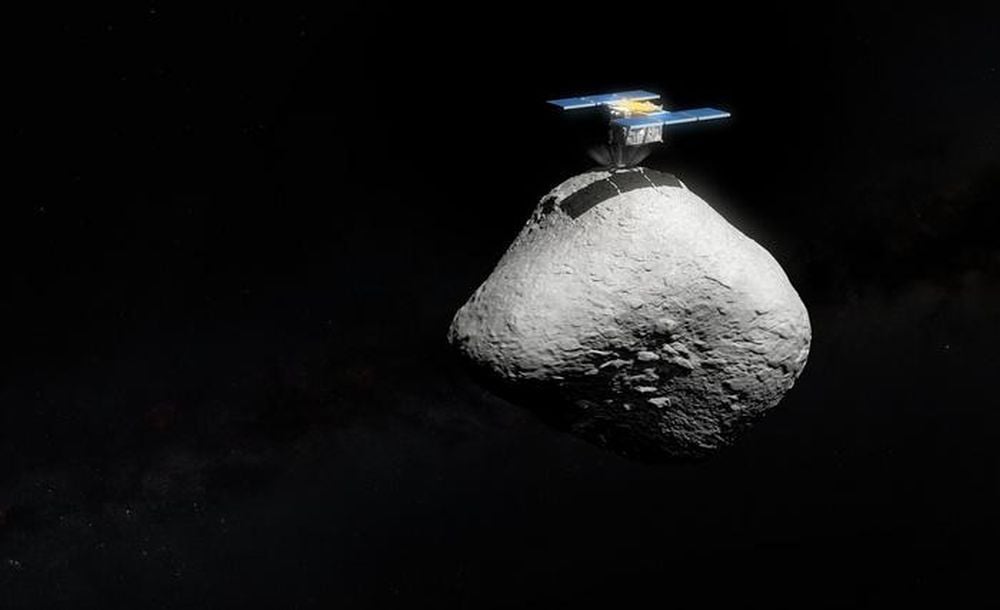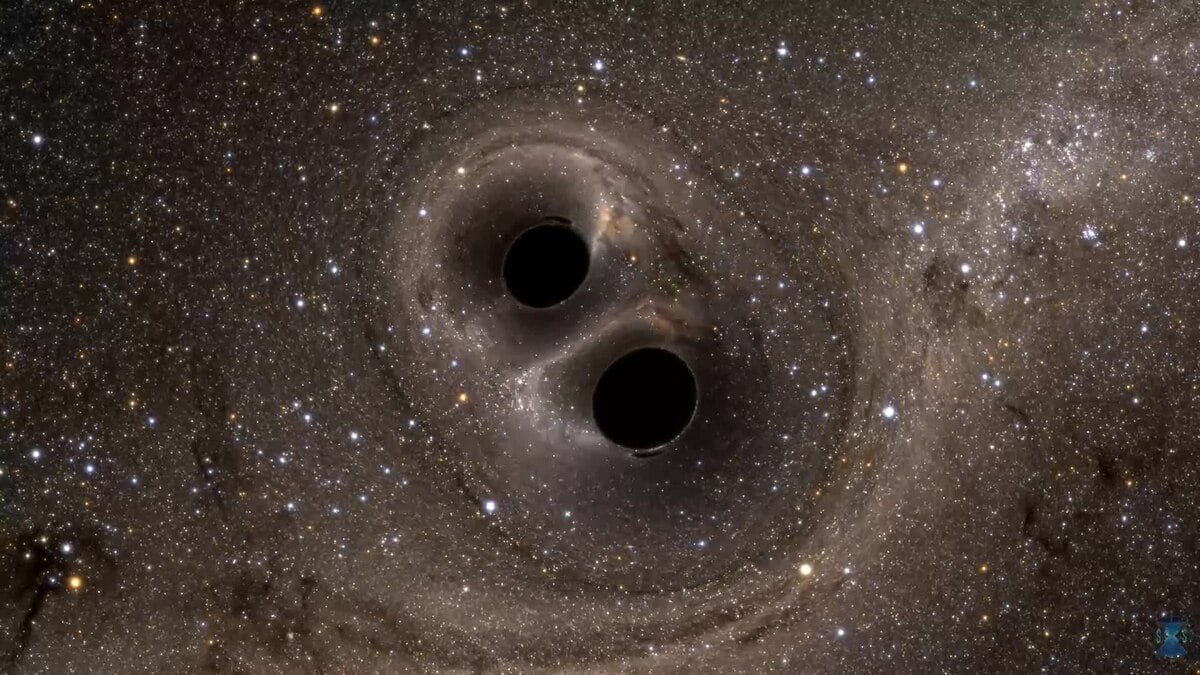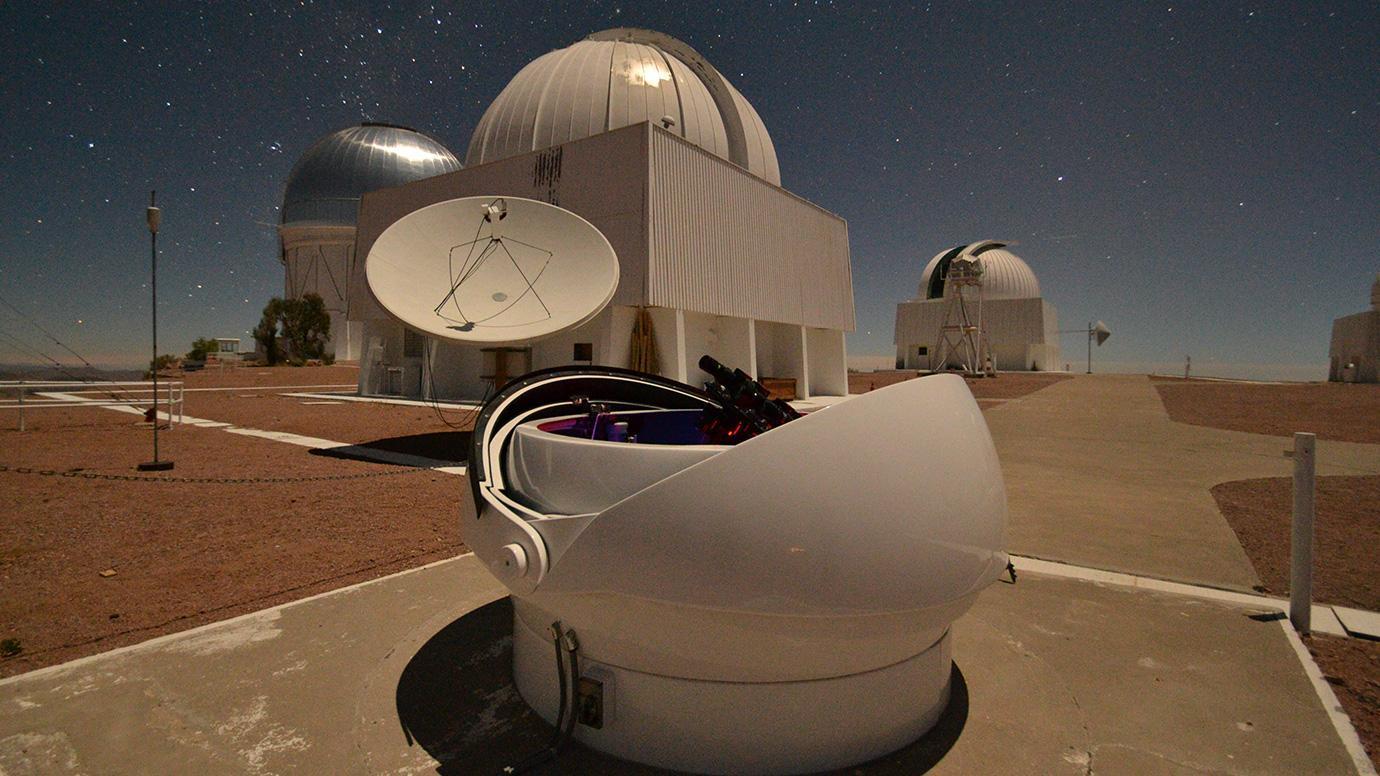Observed spectrum of CT Cha b. top-left: Calibrated JWST/MIRI MRS data of the CT Cha system, showcasing the stellar point-spread function dominating the image at 13.3 − 15.6 µm. Bottom
Archive for September, 202541- Page
Filamentary structures and anisotropy are observed across the dynamic range of star formation. Starting at the star-forming scale, (1) shows the OMC-1 star-forming filament observed by ALMA+IRAM 30 m in
Left panel: The cartoon provides a schematic representation of the central region of NGC 6302. Blue and red colours indicate the blueshift and redshift caused by the expansion of the
Hayabusa 2 may need to alter its visit to its next target. VLT observations show that the asteroid 1998 KY26 is three times smaller than thought and spinning much more
When two black holes collide and merge, they release gravitational waves. These waves can be detected by sensitive instruments on Earth, allowing scientists to determine the mass and spin of
A new study, based on years of precise data from telescopes such as the Dark Energy Survey in Chile, above, suggests that the mysterious force known as dark energy may
The collision and merger of two neutron stars—the incredibly dense remnants of collapsed stars—are some of the most energetic events in the universe, producing a variety of signals that can
The universe is a slow-changing place. While it’s mostly true that the heavens and the deep-sky objects in it will look largely the same across an average human lifetime, there
SpaceX launched its 119th Falcon 9 mission of the year today (Sept. 21), sending another batch of its Starlink internet satellites aloft from Florida’s Space Coast. A Falcon 9 rocket
NASA will announce its new astronaut class and discuss its upcoming Artemis 2 moon mission this week, and you can watch the events live. The action starts on Monday (Sept.
-
 012024 in Review: Highlights from NASA in Silicon Valley
012024 in Review: Highlights from NASA in Silicon Valley -
 02Panasonic Leica Summilux DG 15mm f/1.7 ASPH review
02Panasonic Leica Summilux DG 15mm f/1.7 ASPH review -
 03How New NASA, India Earth Satellite NISAR Will See Earth
03How New NASA, India Earth Satellite NISAR Will See Earth -
 04And Thus Begins A New Year For Life On Earth
04And Thus Begins A New Year For Life On Earth -
 05Astronomy Activation Ambassadors: A New Era
05Astronomy Activation Ambassadors: A New Era -
06SpaceX launch surge helps set new global launch record in 2024
-
 07Space Force plans new ‘Futures Command’ amid pressure to speed up modernization
07Space Force plans new ‘Futures Command’ amid pressure to speed up modernization


